Elena Agliari
Fundamental operating regimes, hyper-parameter fine-tuning and glassiness: towards an interpretable replica-theory for trained restricted Boltzmann machines
Jun 14, 2024Abstract:We consider restricted Boltzmann machines with a binary visible layer and a Gaussian hidden layer trained by an unlabelled dataset composed of noisy realizations of a single ground pattern. We develop a statistical mechanics framework to describe the network generative capabilities, by exploiting the replica trick and assuming self-averaging of the underlying order parameters (i.e., replica symmetry). In particular, we outline the effective control parameters (e.g., the relative number of weights to be trained, the regularization parameter), whose tuning can yield qualitatively-different operative regimes. Further, we provide analytical and numerical evidence for the existence of a sub-region in the space of the hyperparameters where replica-symmetry breaking occurs.
Parallel Learning by Multitasking Neural Networks
Aug 08, 2023Abstract:A modern challenge of Artificial Intelligence is learning multiple patterns at once (i.e.parallel learning). While this can not be accomplished by standard Hebbian associative neural networks, in this paper we show how the Multitasking Hebbian Network (a variation on theme of the Hopfield model working on sparse data-sets) is naturally able to perform this complex task. We focus on systems processing in parallel a finite (up to logarithmic growth in the size of the network) amount of patterns, mirroring the low-storage level of standard associative neural networks at work with pattern recognition. For mild dilution in the patterns, the network handles them hierarchically, distributing the amplitudes of their signals as power-laws w.r.t. their information content (hierarchical regime), while, for strong dilution, all the signals pertaining to all the patterns are raised with the same strength (parallel regime). Further, confined to the low-storage setting (i.e., far from the spin glass limit), the presence of a teacher neither alters the multitasking performances nor changes the thresholds for learning: the latter are the same whatever the training protocol is supervised or unsupervised. Results obtained through statistical mechanics, signal-to-noise technique and Monte Carlo simulations are overall in perfect agreement and carry interesting insights on multiple learning at once: for instance, whenever the cost-function of the model is minimized in parallel on several patterns (in its description via Statistical Mechanics), the same happens to the standard sum-squared error Loss function (typically used in Machine Learning).
Regularization, early-stopping and dreaming: a Hopfield-like setup to address generalization and overfitting
Aug 01, 2023Abstract:In this work we approach attractor neural networks from a machine learning perspective: we look for optimal network parameters by applying a gradient descent over a regularized loss function. Within this framework, the optimal neuron-interaction matrices turn out to be a class of matrices which correspond to Hebbian kernels revised by iteratively applying some unlearning protocols. Remarkably, the number of unlearning steps is proved to be related to the regularization hyperparameters of the loss function and to the training time. Thus, we can design strategies to avoid overfitting that are formulated in terms of the algebraic properties of the interaction matrix, or, equivalently, in terms of regularization tuning and early-stopping strategies. The generalization capabilities of these attractor networks are also investigated: analytical results are obtained for random synthetic datasets, next, the emerging picture is corroborated by numerical experiments that highlight the existence of several regimes (i.e., overfitting, failure and success) as the dataset parameters are varied.
Dense Hebbian neural networks: a replica symmetric picture of supervised learning
Nov 25, 2022



Abstract:We consider dense, associative neural-networks trained by a teacher (i.e., with supervision) and we investigate their computational capabilities analytically, via statistical-mechanics of spin glasses, and numerically, via Monte Carlo simulations. In particular, we obtain a phase diagram summarizing their performance as a function of the control parameters such as quality and quantity of the training dataset, network storage and noise, that is valid in the limit of large network size and structureless datasets: these networks may work in a ultra-storage regime (where they can handle a huge amount of patterns, if compared with shallow neural networks) or in a ultra-detection regime (where they can perform pattern recognition at prohibitive signal-to-noise ratios, if compared with shallow neural networks). Guided by the random theory as a reference framework, we also test numerically learning, storing and retrieval capabilities shown by these networks on structured datasets as MNist and Fashion MNist. As technical remarks, from the analytic side, we implement large deviations and stability analysis within Guerra's interpolation to tackle the not-Gaussian distributions involved in the post-synaptic potentials while, from the computational counterpart, we insert Plefka approximation in the Monte Carlo scheme, to speed up the evaluation of the synaptic tensors, overall obtaining a novel and broad approach to investigate supervised learning in neural networks, beyond the shallow limit, in general.
Dense Hebbian neural networks: a replica symmetric picture of unsupervised learning
Nov 25, 2022
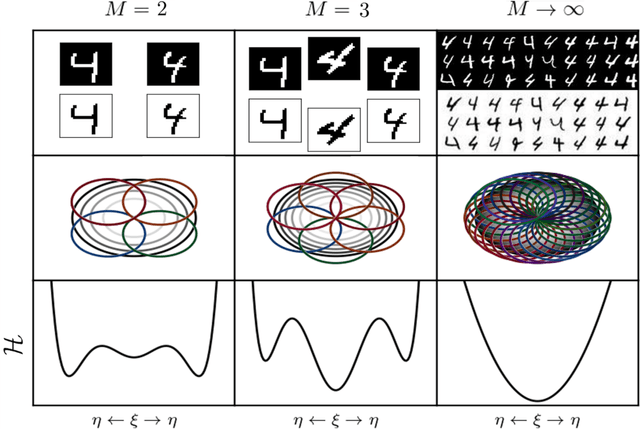
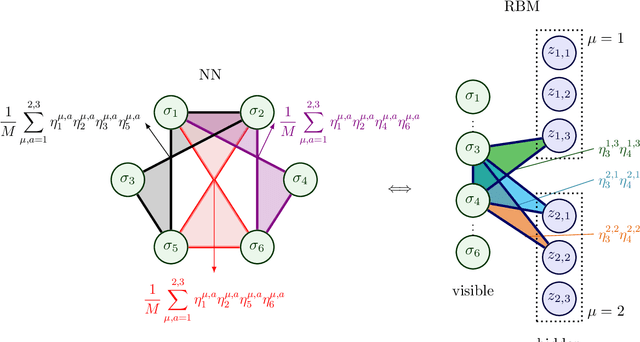
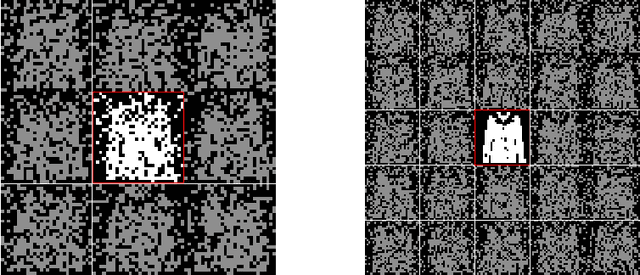
Abstract:We consider dense, associative neural-networks trained with no supervision and we investigate their computational capabilities analytically, via a statistical-mechanics approach, and numerically, via Monte Carlo simulations. In particular, we obtain a phase diagram summarizing their performance as a function of the control parameters such as the quality and quantity of the training dataset and the network storage, valid in the limit of large network size and structureless datasets. Moreover, we establish a bridge between macroscopic observables standardly used in statistical mechanics and loss functions typically used in the machine learning. As technical remarks, from the analytic side, we implement large deviations and stability analysis within Guerra's interpolation to tackle the not-Gaussian distributions involved in the post-synaptic potentials while, from the computational counterpart, we insert Plefka approximation in the Monte Carlo scheme, to speed up the evaluation of the synaptic tensors, overall obtaining a novel and broad approach to investigate neural networks in general.
Pavlov Learning Machines
Jul 02, 2022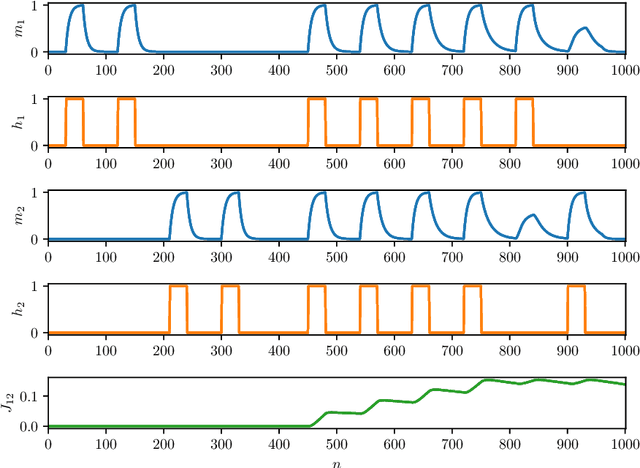
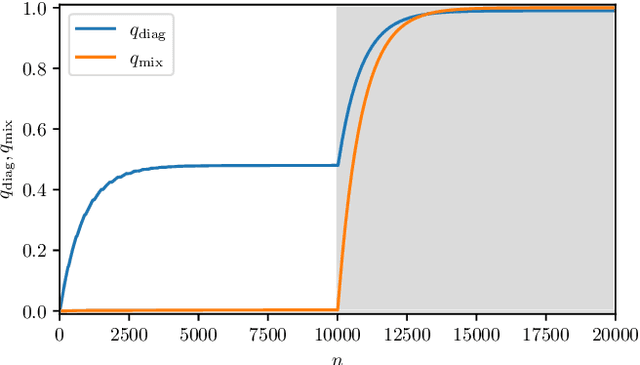

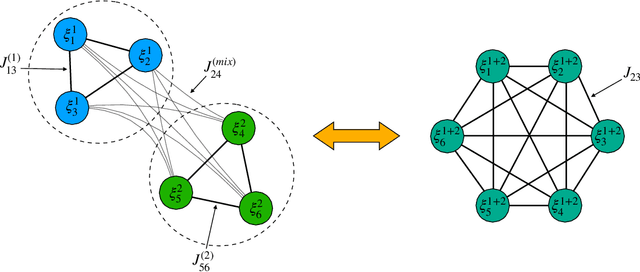
Abstract:As well known, Hebb's learning traces its origin in Pavlov's Classical Conditioning, however, while the former has been extensively modelled in the past decades (e.g., by Hopfield model and countless variations on theme), as for the latter modelling has remained largely unaddressed so far; further, a bridge between these two pillars is totally lacking. The main difficulty towards this goal lays in the intrinsically different scales of the information involved: Pavlov's theory is about correlations among \emph{concepts} that are (dynamically) stored in the synaptic matrix as exemplified by the celebrated experiment starring a dog and a ring bell; conversely, Hebb's theory is about correlations among pairs of adjacent neurons as summarized by the famous statement {\em neurons that fire together wire together}. In this paper we rely on stochastic-process theory and model neural and synaptic dynamics via Langevin equations, to prove that -- as long as we keep neurons' and synapses' timescales largely split -- Pavlov mechanism spontaneously takes place and ultimately gives rise to synaptic weights that recover the Hebbian kernel.
Recurrent neural networks that generalize from examples and optimize by dreaming
Apr 17, 2022
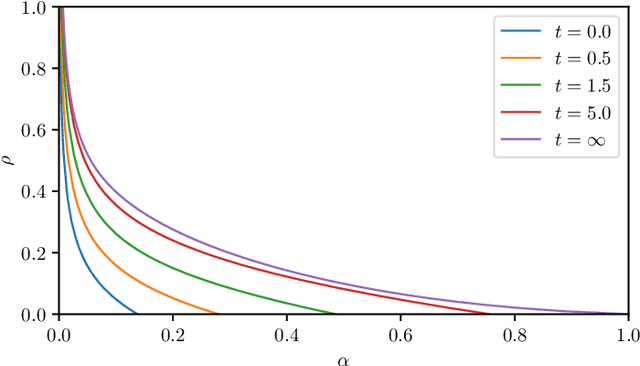


Abstract:The gap between the huge volumes of data needed to train artificial neural networks and the relatively small amount of data needed by their biological counterparts is a central puzzle in machine learning. Here, inspired by biological information-processing, we introduce a generalized Hopfield network where pairwise couplings between neurons are built according to Hebb's prescription for on-line learning and allow also for (suitably stylized) off-line sleeping mechanisms. Moreover, in order to retain a learning framework, here the patterns are not assumed to be available, instead, we let the network experience solely a dataset made of a sample of noisy examples for each pattern. We analyze the model by statistical-mechanics tools and we obtain a quantitative picture of its capabilities as functions of its control parameters: the resulting network is an associative memory for pattern recognition that learns from examples on-line, generalizes and optimizes its storage capacity by off-line sleeping. Remarkably, the sleeping mechanisms always significantly reduce (up to $\approx 90\%$) the dataset size required to correctly generalize, further, there are memory loads that are prohibitive to Hebbian networks without sleeping (no matter the size and quality of the provided examples), but that are easily handled by the present "rested" neural networks.
Supervised Hebbian learning: toward eXplainable AI
Mar 02, 2022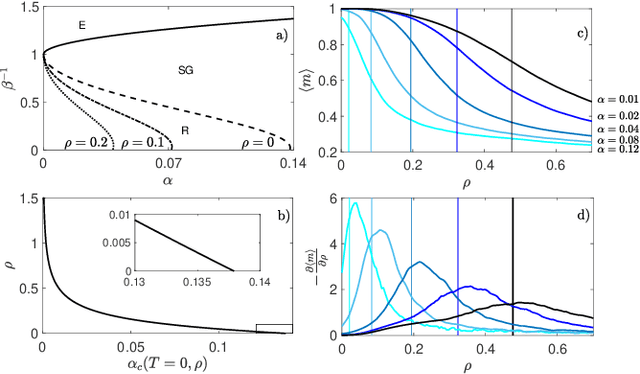
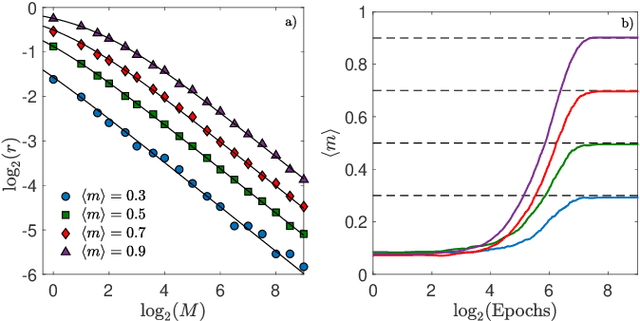
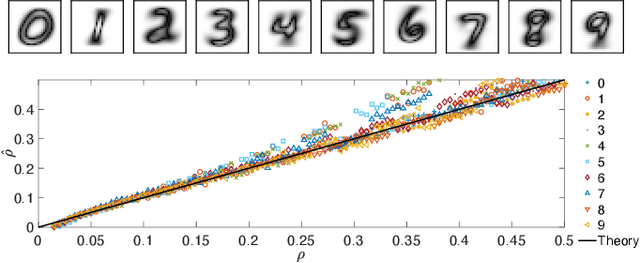
Abstract:In neural network's Literature, {\em Hebbian learning} traditionally refers to the procedure by which the Hopfield model and its generalizations {\em store} archetypes (i.e., definite patterns that are experienced just once to form the synaptic matrix). However, the term {\em learning} in Machine Learning refers to the ability of the machine to extract features from the supplied dataset (e.g., made of blurred examples of these archetypes), in order to make its own representation of the unavailable archetypes. Here we prove that, if we feed the Hopfield model with blurred examples, we can define both {\em supervised} and {\em unsupervised} learning protocols by which the network can possibly infer the archetypes and we detect the correct control parameters (including the dataset size and its quality) to depict a phase diagram for the system performance. We also prove that, for random, structureless datasets, the Hopfield model equipped with a supervised learning rule is equivalent to a restricted Boltzmann machine and this suggests an optimal training routine; the robustness of results is also checked numerically for structured datasets. This work contributes to pave a solid way toward eXplainable AI (XAI).
The emergence of a concept in shallow neural networks
Sep 01, 2021
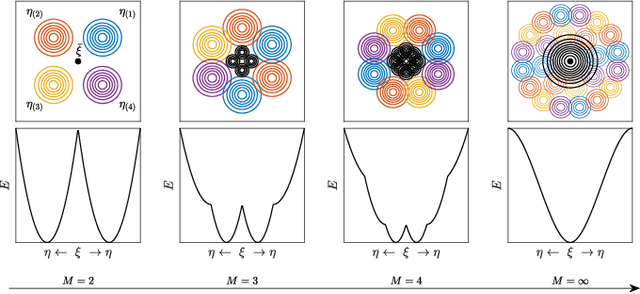
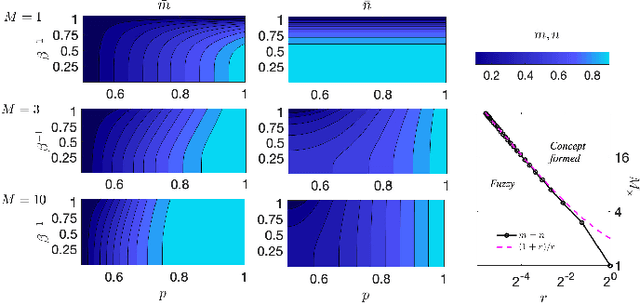
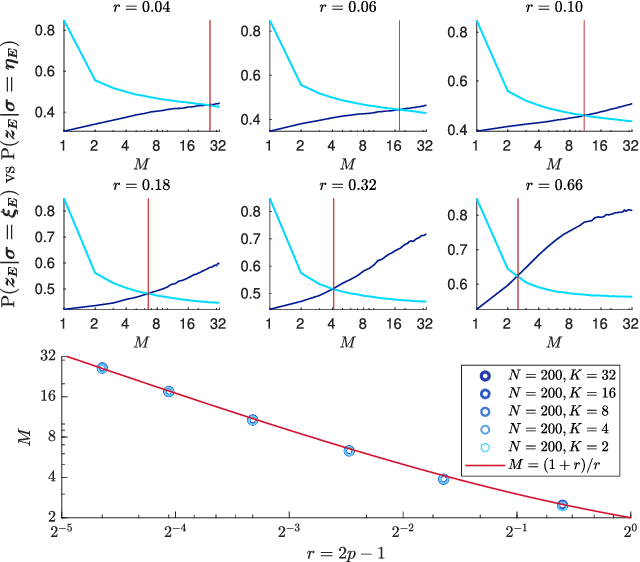
Abstract:We consider restricted Boltzmann machine (RBMs) trained over an unstructured dataset made of blurred copies of definite but unavailable ``archetypes'' and we show that there exists a critical sample size beyond which the RBM can learn archetypes, namely the machine can successfully play as a generative model or as a classifier, according to the operational routine. In general, assessing a critical sample size (possibly in relation to the quality of the dataset) is still an open problem in machine learning. Here, restricting to the random theory, where shallow networks suffice and the grand-mother cell scenario is correct, we leverage the formal equivalence between RBMs and Hopfield networks, to obtain a phase diagram for both the neural architectures which highlights regions, in the space of the control parameters (i.e., number of archetypes, number of neurons, size and quality of the training set), where learning can be accomplished. Our investigations are led by analytical methods based on the statistical-mechanics of disordered systems and results are further corroborated by extensive Monte Carlo simulations.
Neural networks with redundant representation: detecting the undetectable
Nov 28, 2019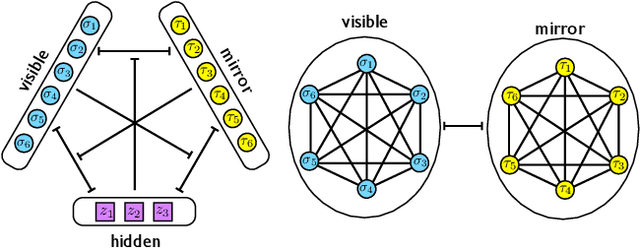
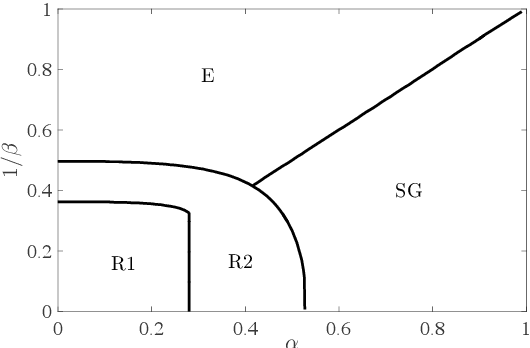
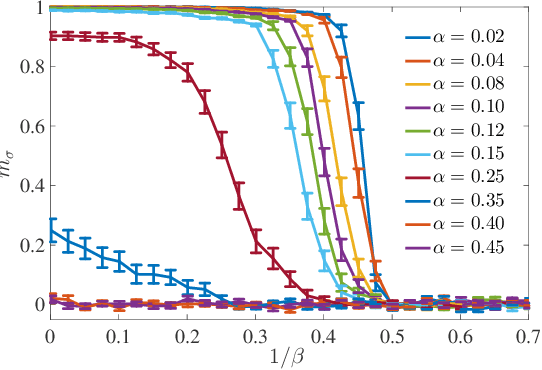

Abstract:We consider a three-layer Sejnowski machine and show that features learnt via contrastive divergence have a dual representation as patterns in a dense associative memory of order P=4. The latter is known to be able to Hebbian-store an amount of patterns scaling as N^{P-1}, where N denotes the number of constituting binary neurons interacting P-wisely. We also prove that, by keeping the dense associative network far from the saturation regime (namely, allowing for a number of patterns scaling only linearly with N, while P>2) such a system is able to perform pattern recognition far below the standard signal-to-noise threshold. In particular, a network with P=4 is able to retrieve information whose intensity is O(1) even in the presence of a noise O(\sqrt{N}) in the large N limit. This striking skill stems from a redundancy representation of patterns -- which is afforded given the (relatively) low-load information storage -- and it contributes to explain the impressive abilities in pattern recognition exhibited by new-generation neural networks. The whole theory is developed rigorously, at the replica symmetric level of approximation, and corroborated by signal-to-noise analysis and Monte Carlo simulations.
 Add to Chrome
Add to Chrome Add to Firefox
Add to Firefox Add to Edge
Add to Edge